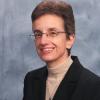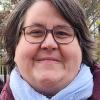To be a creature of God is to be brought into relationship in such a way that the divine mystery is expressed in each concrete existence. Soul is the mirror of creaturely relatedness that reflects the vitality of divine Love. Love is not a thought or an idea, it is the transcendent dimension of life itself, that which reaches out to another, touches the other and is touched by the other.
"Peace is the generous, tranquil contribution of all to the good of all. Peace is dynamism. Peace is generosity. It is right and it is duty."
GSR Today - Caution good news from South Sudan from De LaSalle Christian Br. Bill Firman, executive director of Solidarity with South Sudan, and new attacts on Christians, including Religious of the Assumption in Zinder, Niger.
Fr. Paul Schindler recalls an Oscar Romero who once sat beside him trembling. It was Romero’s first encounter with a group of priests who were furious at the just-announced news that he would be their new archbishop in early 1977. When the Vatican ratified Romero’s status as a martyr Feb. 3, Schindler said, “The people in the parish have been waiting and waiting for this. They hold him as a saint, and they’ve always held him as a saint, and now that the pronouncement has been made, they’re going to be overwhelmed.”
Gene Palumbo is a freelance journalist based in San Salvador. He also teaches at the Casa de la Solidaridad, a semester-long study-abroad program for U.S. university students.
You may or may not be familiar with the story of St. Josephine Bakhita, a modern saint who died in 1947. She was canonized by Pope John Paul II in 2000, and her story has become increasingly significant to the contemporary Catholic church, particularly in its efforts against human trafficking. At the request of women religious, the Vatican has declared her feast day, Sunday Feb. 8, 2015, as the first international day for prayer and reflection on human trafficking.
GSR Today - Apparently a journalist giving up a thriving career to become a woman religious is a headline-making story. The news likes to report on itself.
GSR Today - “We live in the best of times,” Missionary Sister of Our Lady of Africa (White Sister) Carmen Sammut told some 70 international women religious superiors. “This is God’s time for us. It is the space where all that has gone before us culminates, and all that is in front of us starts showing promise.”
GSR Today - At a gathering here today of leadership members of the International Union of Superiors General (UISG), several spoke of the torturous conditions in which their communities live out their missions. Women religious in the Middle East and in parts of Africa are particularly susceptible to violence and political upheaval.
GSR Today - Catholic sisters from around the world, facing new opportunities, are gathering at a conference center in a small town outside of Rome in an effort to add new vitality to their missions by advancing the activities and visibility of the International Union of Superiors General (UISG). They are feeling the back winds of new technologies and a new pontificate.




